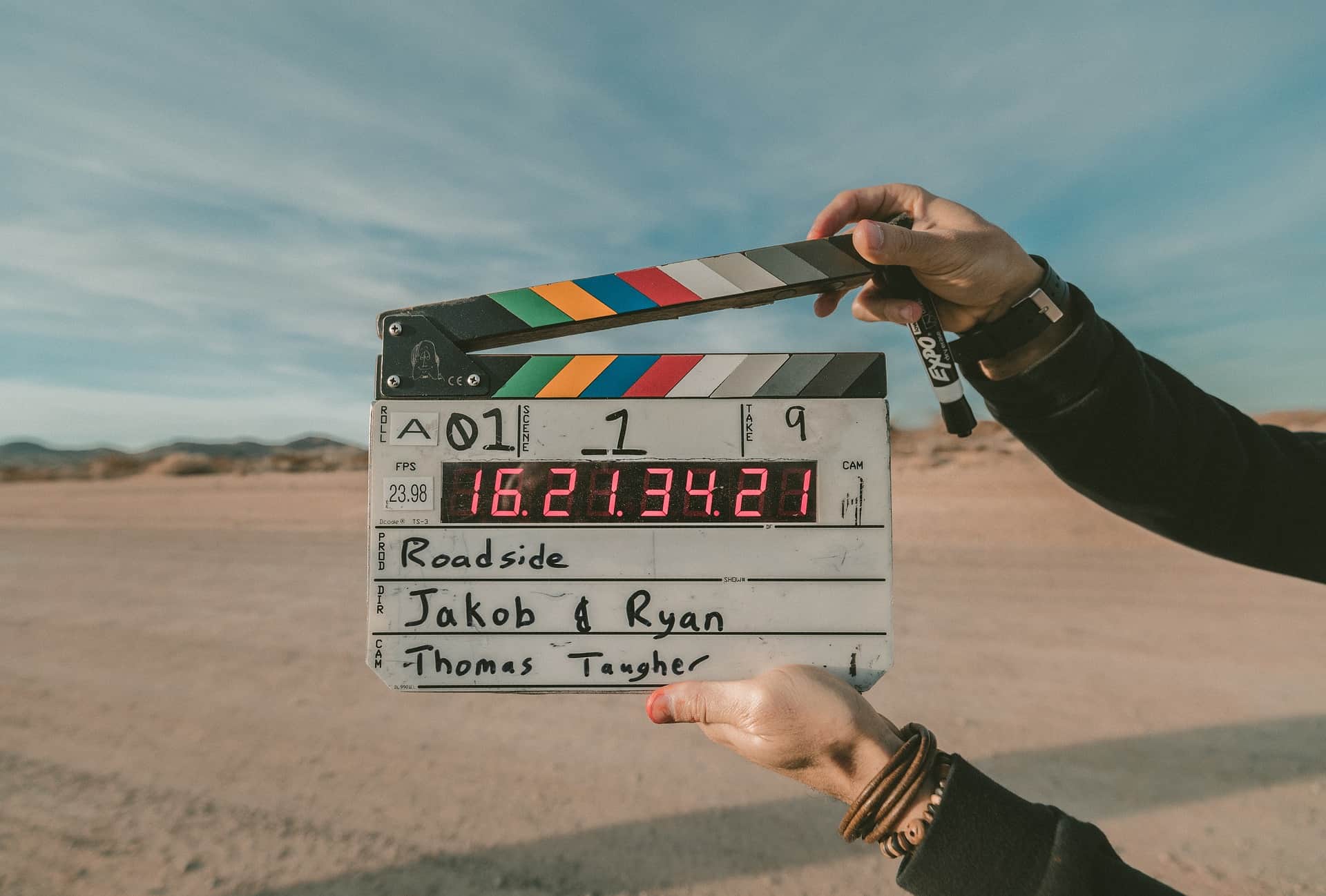
The equipment used by a production sound mixer
Production sound mixers are a must-have for any film or television production. They are in charge of getting clear sound recordings on set. To do this, they use special gear tailored to their task.
One key tool is the audio mixer. It lets them control and adjust the levels of various audio sources, e.g. dialogue, ambient noise, and music. This helps create a realistic soundscape for viewers.
A boom microphone is also essential. It’s mounted on a pole called a boom pole. This mic captures dialogues and other sounds accurately. Plus, it can get close to the action without appearing in the frame.
Wireless mics are also integral. They let actors move around while still being recorded clearly. This eliminates the need for cables, granting more mobility on set.
Lastly, production sound mixers may use accessories. Windshields protect mics from wind noise outdoors. Radio-frequency systems let different crew members communicate without issue.
The Role of a Production Sound Mixer
Production Sound Mixers utilize a range of tools and equipment. They rely on a portable audio recorder to capture dialogue, ambient sounds, and other elements. Additionally, they use microphones such as lavaliers, shotguns, and booms for clear audio.
Headphones are also necessary for monitoring sound. This allows them to assess the quality of the audio in real time.
Interestingly, Production Sound Mixers are involved in post-production too. After filming, they give the recorded audio files to the sound editor who enhances them further.
Before sound-on-film technology in the late 1920s, synchronizing sound with visuals was tough. With the advancements in technology, professionals emerged to revolutionize sound recording on set.
Importance of Proper Equipment
The significance of having appropriate equipment for a production sound mixer cannot be overstated. The right equipment ensures the capture of high-quality audio, contributing to the overall success of the production. It enables the sound mixer to effectively capture dialogue, ambient sounds, and other crucial audio elements, resulting in a more immersive and dynamic viewing experience for the audience.
The equipment used by a production sound mixer plays a crucial role in achieving optimal audio quality. For instance, a high-quality microphone allows for clear and accurate capture of dialogue, minimizing background noise and interference. Similarly, a reliable audio recorder is essential to ensure that all the recorded audio is saved without any loss in quality.
Additionally, the proper equipment includes tools to effectively monitor and control audio levels during recording. Sound mixers rely on headphones and audio meters to ensure that the sound levels are balanced and consistent, preventing distorted or uneven audio in the final production.
Moreover, having the right gear also extends to accessories such as boom poles, shock mounts, and windshields, which help eliminate unwanted noise and handling disturbances during on-location shoots. These accessories contribute to maintaining audio clarity and enhance the overall professionalism of the production.
It is important to note that the types of equipment used may vary depending on the specific requirements of each production. Audio mixers often customize their gear to suit the nature of the project, ensuring that they have all the necessary tools and technology to deliver the desired audio quality.
True Fact: According to an article published in The Hollywood Reporter, sound mixers often invest heavily in upgrading their equipment to keep up with advancements in technology, aiming to deliver the best audio experience possible.
You know you’re a sound mixer when you’re so obsessed with microphones that you’ve considered marrying one.
Microphones
Microphones come in different types. Dynamic mics are tough and suitable for outdoor recordings or live shows. Condenser mics are more delicate and capture vocals with precision.
Their polar patterns determine sensitivity to sound from various directions. Cardioid patterns focus on sound from the front and reject sound from the sides and back. This makes it great for solo vocals or narration.
Positioning the mic is key to optimizing audio capture. The right distance and angle help reduce unwanted noise. Try experimenting with mic placement to improve sound quality.
Bonus Tip: Pop filters help to reduce plosive sounds from words with “P” or “B” sounds.
Types of Microphones
Microphones are key for getting great audio. There are different types, each with a specific use.
Dynamic mics are tough and can handle loud sounds. Perfect for live gigs and recording drums or electric guitars.
Condenser mics capture fine details and need phantom power. Ideal for studio recordings, vocals, and acoustic instruments.
Lavalier mics are great for broadcasting or speaking. They attach to clothing and provide good-quality sound. Often seen during TV interviews and TED talks.
Tip: When selecting a mic, consider use, environment, and budget. Try different types for the best results. The right equipment is key to success in any sound-related project!
Recorders
Recorders can capture even the subtlest of details, making sure no valuable info is lost. They are advanced and come with features like noise cancellation and adjustable microphone sensitivity. Professionals use them to document conversations and events.
They are also convenient. Portable recorders let users capture audio/video content on the go. They are compact lightweight, and easy to carry. Plus, modern recorders have user-friendly interfaces and intuitive controls. Some even offer wireless connectivity.
Having reliable recorders has revolutionized many fields. For example, court proceedings can now be accurately documented beyond doubt. According to NACM, digital recording equipment has reduced transcription costs while maintaining accuracy.
Digital vs. Analog Recorders
Digital vs. Analog Recorders:
Recording audio is an art that needs the perfect gear. Choosing between digital or analog recorders is a crucial decision. Digital recorders are convenient and easy to use, but analog recorders provide a natural and warm sound.
Digital recorders have changed audio recording. Easy editing, storage, and transferring of audio files are possible. Because of their size and features, many professionals prefer digital recorders.
Analog recorders still have appeal in some situations. Their recording of sound is deep and rich. Many musicians decide to use analog for its warmth and character, particularly when using vintage instruments or genres like jazz and blues.
One story captures the importance of using the right equipment. In a studio on a mountain, a producer and a musician were making an album. The producer was a fan of analog equipment and wanted to record on tape.
The musician was digital-aged and disagreed. But as they started recording, something amazing occurred. The tones from the vintage microphones plus the analog tape made a sound that was unique.
The album became a masterpiece. It demonstrated how selecting the right equipment can boost an artist’s work and give listeners a special experience.
Wireless Systems
Wireless systems are now a part of our everyday lives. They provide us with convenience and easy access to the digital world. From smartphones to smart homes, these cutting-edge technologies have changed the way we live.
Our lives are now intertwined with wireless systems. We can enjoy music on Bluetooth speakers or control our home security with Wi-Fi cameras. No more mess with tangled cables; we can stay connected anywhere.
Wireless systems have also changed industries such as healthcare and transportation. Medical professionals can now access patient information quickly. Smart transportation systems optimize routes using real-time data, reducing carbon emissions.
For us to make the most of wireless systems, we need the right equipment. Upgrading our devices regularly will give us better performance and compatibility with new features. Reliable routers and signal boosters can also improve network coverage, making sure there are no dead zones.
We should not miss out on new developments in technology. Staying updated with new releases and advancements in equipment can give us enhanced productivity, convenience, and an improved quality of life. Get proper equipment today for a flawless wireless experience tomorrow.
Transmitters and Receivers
Transmitters and receivers are super important for communication. They send and receive signals, making wireless networks, broadcasting, and satellite communication possible. Transmitters generate electromagnetic waves that can be radio frequencies, microwaves, or light. Receivers capture these waves and convert them back into info. Without them, long-distance communication would be tough.
When it comes to these devices, quality is key. High-quality gear means signals are sent accurately with minimal distortion. Also, reliable receivers help pick up weak signals and boost them so other devices can use them. Plus, the frequency range used must be right for the task. For example, mobile phones have specific frequencies set by regulators.
Technology has improved transmitters and receivers over time. They are now smaller, more powerful, and use less energy. Receivers are more sensitive to faint signals and have better noise filtering.
Boom Poles and Boom Microphones
Boom poles offer flexibility for capturing audio from different angles and distances. When positioned closer to a sound source, they reduce ambient noise and improve signal-to-noise ratio. Boom mics capture sound with greater depth and richness than traditional handheld or lavalier mics. To maximize results, lightweight carbon fiber boom poles are ideal. Shock mounts or suspension systems reduce handling noise and vibrations. It’s also important to position the boom mic just out of frame and as close as possible to the actors or subject. Lastly, having a dedicated boom operator is key for successful operation.
Selecting the Right Equipment for the Job
Selecting the appropriate equipment for a production sound mixer is crucial to ensure high-quality audio. Proper equipment selection involves considering various factors such as the location, type of production, and specific sound requirements. By making informed decisions, the production sound mixer can optimize the audio recording process and deliver exceptional results.
The table below illustrates the key equipment used by a production sound mixer:
| Equipment | Description |
|---|---|
| Microphones | Captures sound from different sources with precision. |
| Headphones | Allows the sound mixer to monitor the audio being recorded. |
| Portable Audio Recorder | Used for recording high-quality audio on location. |
| Boom Pole | Enables the sound mixer to position the microphone precisely. |
| Wireless Microphone System | Provides flexibility for capturing sound without restrictions. |
| Audio Mixer | Combines and controls multiple audio sources. |
| Sound Blankets | Helps reduce unwanted noise and echoes in the recording area. |
| Windshield | Minimizes wind noise during outdoor recordings. |
Considering the specific details of each project is essential when selecting the appropriate equipment. For example, if the production involves outdoor scenes with high wind levels, a windshield becomes crucial to ensure clear audio. Additionally, a wireless microphone system provides freedom of movement for actors and allows for capturing audio in challenging locations. Furthermore, the choice of microphones depends on the intended sound quality and the sound sources in the scene.
To enhance their equipment selection process, production sound mixers can consider the following suggestions. Firstly, conducting thorough research on the location and production requirements helps identify any specific challenges that need to be addressed. Secondly, consulting with other professionals in the industry can provide valuable insights and recommendations based on their experiences. Finally, staying updated with the latest advancements in sound recording technology allows sound mixers to leverage innovative equipment that can significantly improve the audio quality.
By carefully selecting the right equipment for each job, production sound mixers can achieve optimal audio recording results. A methodical approach, considering the unique details of the production, and seeking advice from industry peers can greatly enhance the quality of the final audio. With the appropriate equipment, production sound mixers can create immersive and captivating soundscapes that enhance the overall viewer experience.
Whether it’s a peaceful countryside or a chaotic warzone, a production sound mixer is like a chameleon, adapting their equipment to any environment faster than you can say ‘Is that a boom or are you just happy to see me?’
Considerations for Different Environments
The right gear for a job is a must. This applies to all environments. Temperature, humidity, and terrain are vital factors to take into account when selecting tools and machinery.
In extreme cold or heat, insulated equipment is a must to avoid freezing and to stay functional. In hot and humid places, corrosion-resistant features are key. This ensures the tools can handle moisture and still work well.
The terrain is also important. For rough grounds, tools with sturdy tires or tracks give better stability and maneuverability. Especially in construction sites, this is essential.
Noise pollution rules should be kept in mind. Some areas have strict rules on sound levels. Quieter machinery is needed to keep nearby residents or wildlife habitats undisturbed.
In short, when operating in different environments, temperature, humidity, terrain, and noise regulations must be considered. By picking the right equipment for each job, productivity can be maximized while being safe and efficient.
Budgetary Constraints
Budgetary constraints can severely affect the equipment selection for a job. People and businesses must look at their options and choose wisely, due to financial restrictions. It is important to understand the available budget and decide on the necessary equipment for the job.
In such cases, functionality should be prioritized over fancy features. Investing in good quality equipment that meets the necessities is essential. Also, searching different suppliers and comparing prices will help get the best value for your money.
It is also important to look at long-term costs. Cheaper options may seem attractive at first, but they may cost more in maintenance and repairs down the line. Getting durable equipment from trusted brands is a wiser option.
Exploring second-hand or refurbished options is also a great idea when working with a limited budget. Used equipment, which is still in good condition, can serve its purpose efficiently at a lower cost. This allows for cost savings without any compromise on quality.
The importance of budgetary constraints is demonstrated by a small construction company. Due to financial constraints, they had to select their equipment for various projects wisely. By being aware and prioritizing their needs, they were able to finish the jobs within their budget without any compromise on quality or safety. This experience emphasizes how essential it is to adhere to monetary limits while still getting optimal results.
Best Practices in Using Production Sound Equipment
Best Practices in Utilizing Production Sound Equipment
To maximize the efficiency and quality of production sound equipment, professionals should adhere to best practices. These practices ensure optimal performance and accurate sound recording on set. By following the guidelines outlined below, production sound mixers can achieve the best possible results.
The following table highlights the best practices for using production sound equipment:
| Best Practices in Utilizing Production Sound Equipment |
|---|
| 1. Selecting the right microphone for the specific scene and desired sound quality |
| 2. Proper positioning of microphones to capture clear and balanced audio |
| 3. Setting appropriate levels to avoid distortion or clipping |
| 4. Utilizing windshields or dead cats to minimize wind noise in outdoor recordings |
| 5. Consistently monitoring audio levels and making adjustments as needed |
| 6. Employing wireless transmitters and receivers for mobility and flexibility |
| 7. Employing boom poles and shock mounts to reduce handling noise |
| 8. Using headphones to monitor audio quality and detect any issues |
| 9. Employing audio mixers to control and balance multiple audio sources |
| 10. Regularly checking and maintaining equipment to ensure optimal performance |
In addition to these best practices, it is crucial to ensure that the production sound equipment is compatible with other devices and systems being used on set. This can help avoid any technical complications or compatibility issues during the recording process.
To further enhance the sound recording process, professionals should consider the following suggestions:
- Prioritize proper microphone selection: By choosing the appropriate microphone for each scene, the desired sound quality can be achieved. Different microphones have different properties and characteristics, so understanding their strengths and limitations is essential.
- Optimize microphone positioning: Proper microphone placement is crucial for capturing clear and balanced audio. Experiment with microphone positioning to find the optimal location that best captures the sound while minimizing unwanted noise or interference.
- Maintain consistent audio levels: Monitoring and adjusting audio levels throughout the recording process is vital to avoid audio distortion or uneven sound. Regularly check levels and make necessary adjustments to ensure the best quality recording.
By implementing these suggestions and following the best practices outlined above, production sound mixers can effectively utilize sound equipment and achieve high-quality audio recordings on set. Finding the perfect spot for every piece of equipment is like a meticulous Tetris game, because no one wants a boom pole falling on their head mid-scene.
Proper Placement and Positioning
Positioning production sound equipment is paramount for great audio quality. By properly placing microphones, speakers, and recorders, sound quality can be balanced.
Microphones should be placed at the right distance from the source. Too close or too far away can cause distorted or weak sound. It is important to consider the microphone’s direction and position it to reduce ambient noise.
Speakers should be situated to disperse sound evenly throughout the space. This not only ensures ideal audio coverage but also reduces reflections and echoes that can hurt sound quality.
Mixers and recorders should be set in a spot that enables easy access and monitoring while keeping interference from external elements such as electrical elements or background noise to a minimum.
A well-known film producer had a great lesson in the significance of proper placement and positioning when numerous scenes had poor audio quality due to inadequate microphone placement on set. This necessitated extensive editing and extra voice-over work. This story highlights the need for precise attention to detail when arranging production sound equipment.
Minimizing Noise and Interference
Noise and interference can hurt production sound quality. To reduce problems, follow these best practices:
- Use high-quality cables and connectors with low interference.
- Keep cables organized and away from power sources.
- Utilize proper grounding techniques to eliminate electrical hums or buzzing sounds.
- Choose the right location when recording to avoid external noises.
- Opt for balanced audio connections rather than unbalanced ones.
- Select a quiet environment and use soundproofing materials.
- Use proper microphone techniques, placing them close to desired sound sources while avoiding ambient noise.
- Set appropriate microphone levels to prevent distortion or clipping.
- Check and maintain equipment regularly, e.g. cable integrity, and cleaning connectors.
By following these tips, you can minimize noise and interference to achieve professional-grade audio. Enhance your productions with crystal-clear sound – start today!
Maintenance and Troubleshooting
It’s essential to not only follow these tips but also to contemplate extra details. Get to know the particular maintenance needs for different types of equipment. Be aware of the newest trends in the industry to make wise decisions with regard to troubleshooting methods.
Here is a real-life story to demonstrate the worth of maintenance. On a film set, the crew encountered sound issues due to neglected cable maintenance. This caused delays and frustration for the team. They learned how small issues can cause major results if left unchecked.
Proactive maintenance and effective troubleshooting go together when using production sound gear properly. By prioritizing these practices, you can guarantee efficient operations and produce high-quality audio outcomes for your projects.
Case Studies: Examples of Equipment Usage in Film and TV
Production sound mixers are essential for creating high-quality audio for film and TV. They use a range of gear – sound recorders, boom mics, wireless mic systems, and lavalier mics.
Sound recorders are portable and give great recordings. Boom mics, used by boom operators, help capture dialogue from a distance. Wireless microphone systems let sound mixers move about the set while keeping sound quality clear. Lavalier mics, or lapel mics, are small and help record audio discreetly.
To improve workflow and sound quality, sound mixers can:
- Get high-grade equipment to reduce post-production adjustments.
- Regularly clean microphone capsules to keep audio quality up.
- Stay updated on tech advancements to use new tools.
- Attend conferences and workshops for knowledge-sharing.
In conclusion, different tools used by production sound mixers are vital for capturing clear dialogue and creating immersive soundscapes. By understanding the capabilities of the equipment and implementing the tips, the audio experience for viewers is enhanced and seamlessly integrated with visual storytelling.
Conclusion
Production sound mixers are essential for capturing great audio on set. They depend on a variety of devices, from mixers to boom mics. Lavalier mics work great for close-up dialogue, while shotgun mics record far-away noises. The mics are often put on boom poles for strategic positioning. Wireless transmitters make it possible to capture sound remotely. Plus, headphones give real-time feedback on audio quality. High-quality recorders with plenty of channels and features are also critical. And, for communication between crew members, wireless systems like walkie-talkies or intercoms are necessary.
Pro tip: Organization is key! So, keep all equipment organized and get to know each piece before shooting.
Frequently Asked Questions
Q: What is the role of a production sound mixer?
A: A production sound mixer is responsible for recording high-quality audio on set during film or television production.
Q: What equipment does a production sound mixer use?
A: A production sound mixer utilizes various equipment such as microphones, boom poles, recorders, mixers, wireless systems, and headphones.
Q: What type of microphones are commonly used by production sound mixers?
A: Production sound mixers often use shotgun microphones, lavalier microphones, and handheld microphones to capture dialogue and ambient sounds.
Q: What is the purpose of a boom pole in production sound mixing?
A: A boom pole is used to position a microphone overhead and capture clear audio while staying out of the frame of a shot.
Q: How does a production sound mixer ensure quality audio recording?
A: A production sound mixer ensures quality audio recording by using proper microphone placement, adjusting levels, monitoring sound, and minimizing unwanted noises.
Q: Why is a wireless system important for a production sound mixer?
A: Wireless systems allow production sound mixers to record audio without the need for cables, providing flexibility and mobility on set.
Subject: The equipment used by a production sound mixer
Company: Hollywood Connections Center
Network: MyHollywoodPage.com
The Hollywood network of arts and creative professionals.





